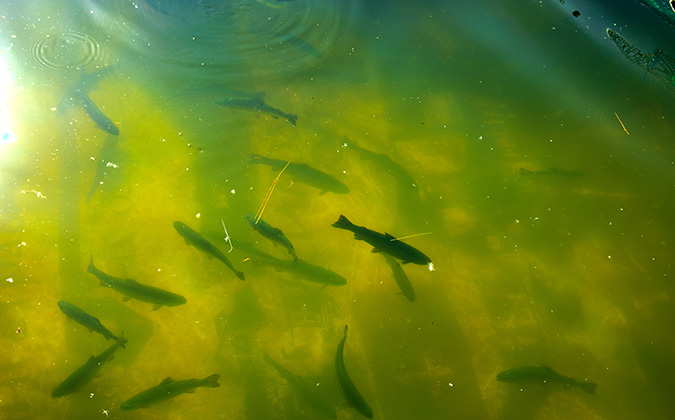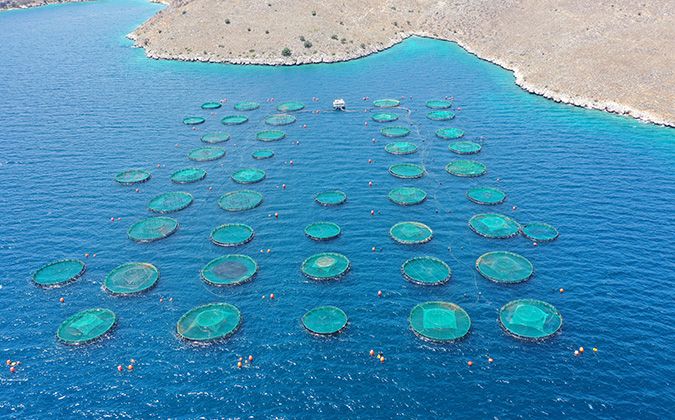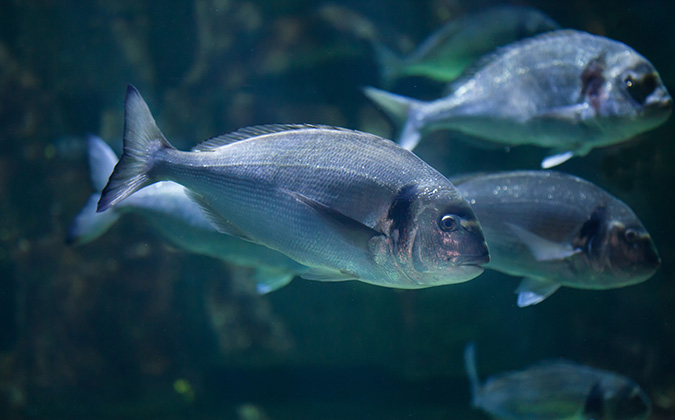
Pathologies in Mediterranean finfish: Causes and control strategies
By Valerio Vitalini, MSc
Aquaculture consultant, Rome, Italy
The fish species farmed most in the Mediterranean are sea bream (Sparus aurata) and sea bass (Dicentrarcus labrax). Total annual production is growing and is currently over 400,000 tons per year. Most producers farm both species in the same sea cage site with obvious problems of pathogen transmission between the two species. The aim of this article is to provide a practical summary of the main diseases affecting Mediterranean fish farming and a brief description of their remedies.
Vibriosis
In general, sea bass are much more sensitive to bacterial infection, while sea bream can often be healthy carriers. Listonella anguillarum, a bacterium of the genus Vibrio, causes massive mortality in sea bass from juveniles until harvest size (around 400g), resulting in heavy economic losses despite Vibrio bacteria being sensitive to common antibiotics.
Immersion vaccines, combined with the use of specific antibiotics, have significantly limited the spread of L. anguillarum in the young stages. But only since the advent of injectable vaccines in the early 2000s has this pathogen been drastically or completely reduced during the whole production cycle. Administered by intraperitoneal injection in fish larger than 15g, these vaccines generate a stronger immune response and have a longer duration of immunity.
Commercial vaccines are specific only to this species of Vibrio, however, and other emerging species such as V. harveyi or V. ordalii — less aggressive but still dangerous — can also cause substantial losses. Especially under conditions of stress, they act as secondary pathogens, causing low-level mortality for prolonged periods. The development of polyvalent vaccines against several Vibrio species could help ensure broader protection against these bacteria.
Flexibacter
Several other bacterial species can cause significant mortality in sea bass populations, especially when subject to stresses such as handling, increase in water temperature, excessive density, and unhygienic rearing net cage conditions. These include Flexibacter, such as Tenacibaculum maritimum in fingerlings and young fish, and Aeromonas ssp (salmonicida, veronii) in larger fish over 200g.
Commercial vaccines against Flexibacter are not currently available, chiefly because the strains tend to be site-specific. Antibiotic treatments are effective, but as with V. harveyi, they will only work if the source of stress that weakens the fish’s immune system is removed.
Pasteurella
Another bacterium that can cause severe mortality in sea bass and sea bream is Photobacterium damselae (Pasteurella). Pasteurella typically causes mortality in juveniles, though recent years have also seen an increase in mortality due to Pasteurella in larger fish (over 100g).
Pasteurella is sensitive to common antibiotics, but vaccination offers the best protection against this economically important pathogen. In juveniles, the use of immersion vaccines — which can be absorbed through the epithelium of fish up to 8g — has been shown to protect fish for up to 6 months. In larger fish, the application of recently commercialized injectable vaccines represents the best solution for controlling Pasteurella throughout the production cycle.
Viral disease
Viral diseases and particularly Nodavirus (NNV) also take a significant toll on Mediterranean aquaculture, with sea bass once again being most affected. Sea bream may be healthy carriers of several strains, but some recombinant strains (RG/SJNNV and SJ/RGNNV) can cause extremely high mortality (up to 90%) in bream less than 1g. However, it is the RGNNV strain — which exclusively infects sea bass — that causes huge losses from larvae to harvest-size fish in Mediterranean cages, with juveniles being affected most.
Since 2018, commercial injectable vaccines against nodavirus have been available that effectively control mortality from 15g to the end of the production cycle.
Another virus of note is lymphocistivirus (Lymphocisti), which infects sea bream only in the juvenile stages; in severe form it can lead to growth losses and modest mortality. There are currently no effective therapies for this virus.
Parasitic disease
In cages, parasites mainly affect sea bream. The most dangerous pathogen in the cultivation of sea bream is a gill parasite known as Sparicotyle, which completes part of its production cycle on the rearing net cage. Bream from 15 to 80g are susceptible and mortality rates can exceed 50% of the population in one month. In low-oxygen conditions, mortalities have also been recorded in larger fish.
Currently there are very few formaldehyde-based products effective in treating chronic Sparicotyle infections. As bath products, the ones that do exist are not always easily usable in sea cages. The best ways to combat parasites are therefore to maintain clean nets and use functional diets that strengthen the natural defenses of fish. Also essential are best farming practices, such as avoiding peak parasite presence in the environment when the fish are at the target infection size.
Intestinal parasites are another important problem in sea bream production. Enterospora nucleophila (Enterospora) in severe form can lead to serious growth losses. In case of coexistence with other parasites, such as Sparicotyle (Sparicotyle chrysophrii), it can cause significant mortality in sub-adult sea bream.
Enteromyxum leei is yet another intestinal parasite that causes heavy growth losses in sea bream populations when present in massive numbers. Currently there are no commercial parasiticides that are effective in combating this parasite; the best strategies for managing it are therefore the use of healthy juveniles, functional diets in sensitive periods, and farming practices that improve fish welfare.
In sea bass, Diplectanum (Diplectanum aequans) is a gill parasite that primarily affects juveniles, but that generally does not create serious problems in sea cages.
Other pathologies
Winter disease, a syndrome that can affect sea bream in the second year of rearing during the winter period, causes serious losses. Although the causative agent isn’t clear, the use of a specific dietary regime to prepare fish for the winter season has greatly contributed to limiting winter disease mortality in Mediterranean aquaculture.
The progressive increase in the use of vaccines in sea bream and sea bass aquaculture is playing a fundamental role in combating important diseases and has contributed decisively to the increase in annual production of farmed Mediterranean finfish. Finding sustainable and effective remedies for parasites remains an important challenge. Genetic selection of more resistant fish, combined with the use of rearing practices that safeguard animal welfare, are arguably the best ways to continue fighting parasites in a sustainable way.
Valerio Vitalini is an aquaculture consultant based in Rome, Italy. Previously he was aquaculture manager at Gruppo del Pesce, one of Italy’s main producers of sea bass and sea bream. He holds a master’s degree in marine ecology and has published several research papers on Mediterranean aquaculture.






